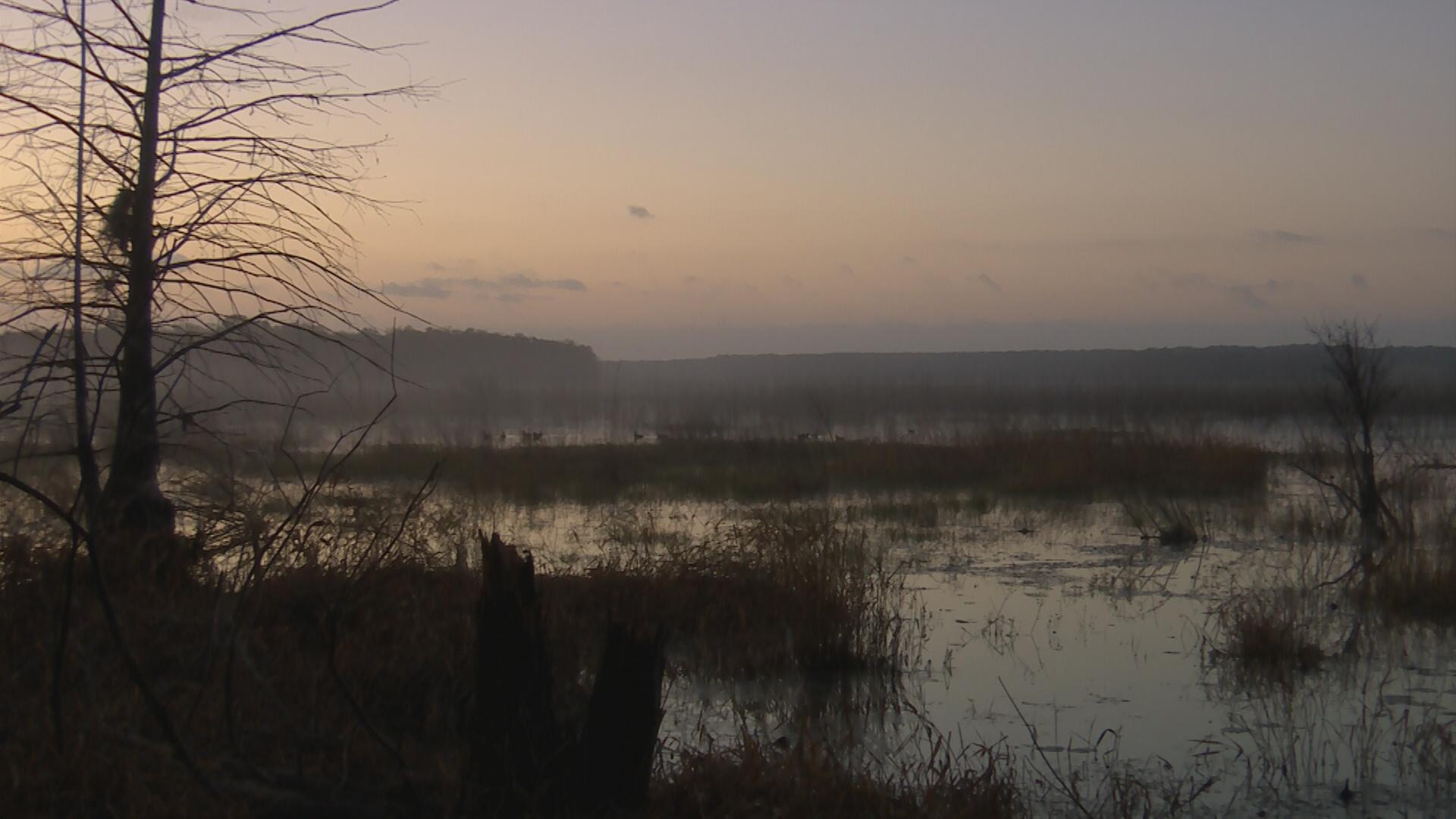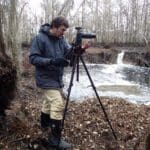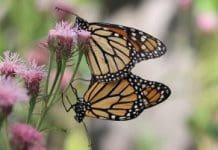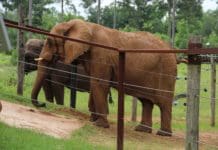

From the time of the native Apalachee, the soils of the Red Hill have been good to farmers. That means fresh, local ingredients for new Sweetgrass Cheese Shop chef Wes Kent. He wears a big grin as he points out a bin of radishes. “These are from Breaking Away Farms in Meggs, Georgia. Really beautiful produce, just like all of our other Red Hills market produce.” Wes appreciates that the way food is raised affects the way it tastes.
Jessica Little owns Sweetgrass Dairy with her husband Jeremy. Jessica says “Sweetgrass Dairy was started in 2000 by my parents, Al and Desiree Weiner. They had farmed conventionally and switched over to a New Zealand rotational grazing-style farm in 1993. The milk was so different from cows out on grass that they really wanted to show people the importance of where their food comes from.”
After the family’s success creating artisanal cheeses, Jessica and Jeremy opened the Cheese Shop. Their mission is to promote like-minded farms in the community. This is part of what brought Wes Kent back to his hometown.
“I moved back to Thomasville to incorporate seasonality into the cuisine of Thomasville, and to educate the community more on local farms and good food.” Wes slices a sweet chili from Turkey Hill Farm. “We use a lot of the Red Hills market vendors. We’re using a lot of Turkey Hill Farms, Orchard Pond…”
Jeremy and Jessica Little add to Wes’ list with Breaking Away Farms and Full Earth Farm in Quincy. They prefer farms that are excited about the growing of produce that they do.
In the kitchen, Wes is proud of the next course, “It’s a super traditional French home meal. It’s called cassoulet and it could be cooked with rabbit or duck or chicken… really any meat.”
Farms do put in a lot of hard work, and Sweetgrass wants to respect all that goes into creating distinct flavors. “Both Jeremy and Wes have the same kind of feeling in the kitchen, which is that people are working hard to grow this incredible produce,” says Jessica, “They just don’t want to mess it up, and let the products speak for themselves.”
Jeremy Little says “We want to share it the way it was intended. We’re not trying to cover it up.”
“With little access to recreational equipment, we had to make our own, or, of course, we had to use what we had… nature and the lake,” says Eluster Richardson. “We grew up with the knowledge that we had to use our minds to create, rather than just depend on others to create for you. We had to create our own, which is good.”
Like many hunting plantations, Tall Timbers once had rented its land to African-American farmers. The Jones Tenant House still stands on Tall Timbers land as an example of those little houses. Eluster Richardson painted the informational displays, drawing on a childhood growing up on a tenant farm by Lake Jackson.
“This is just an everyday little scene of the activities during that time. I think they used the same blueprint for every house in the area because all of them was made the same. The one I grew up in was a block house, but just a short distance away, my grandmother lived in a house just like this,” says Eluster, indicating the Jones Tenant House. “Rooms like this is kind of familiar. We took a bath right in front of the fireplace, ‘cause that was the only source of heat. We wrapped up and run to the bed, and of course we had to jump in right away because it was so cold.”
Blending family memories and historical research, Eluster carefully planned and composed every scene. The composition evolved as it was reviewed. The Jones House paintings were done in watercolor, but Eluster also does oil and even sculpture.
Eluster shows a beautiful sculpture of a ballerina. “One of my ballet pieces, from my upcoming show. It’s going to showcase a variety of cultural dances. Each culture has a dance they identify with,” he says, turning to show a colorful painting as well. “This is African tribal dance here, and this is an oil. And of course, I want to capture that rhythm of dance.”
After retiring as a telephone engineer, Eluster has become a successful artist, but that wasn’t part of his career plan. “I never thought in a million years I would be an artist. To come back and reproduce the everyday scenes we took for granted during that time… to recreate my childhood was such a pleasure.”
A big part of that childhood was Lake Jackson. He says “Of course, I grew up within walking distance of Lake Jackson, and of course we either fished in our spare time or during hunting season we hunted. And the lake was accessible, so duck hunting was one of our things.”
January 31st was the last day of duck season in Florida. Even before sunrise, the sounds of wildlife are thick on Lake Iamonia.
Lake Iamonia is one of the Red Hills’ four sinkhole lakes, directly feeding the Floridan aquifer. The water in our springs and in our taps comes from the aquifer. In the Red Hills, that water is protected by a thick layer of clay sediments. It’s less protected in these lakes. Healthy habits make for cleaner water. And they provide a host of recreational opportunities. Even if the fish don’t bite and the ducks don’t land, there are worse places to be.
Lane Green is the former Director (retired) of Tall Timbers and an avid duck hunter. “It’s been dismal. The worst year in my lifetime, in terms of ducks being here while the season is open. Because of warmer weather up North until recently, and until it freezes over in Canada and the Northeast, they don’t leave to come south. That just occurred, what, last week (mid-January)? And the ducks started filtering in. Yesterday it was steady and we were done by 8 o’clock and everyone was picking up by 8 o’clock.”
Lane’s favorite spot does have favorable features. “Ringnecks are diving ducks, which means that you’ll see ‘em sitting out there today – they’ll be sitting on top of the water, all of a sudden – PLOOP! Out in the bonnets, we call them, or lily pads, they feed on dollar bonnets, the smaller ones, and coon-tail moss which is underneath this water.”
This day is foggy, and the ducks have been avoiding the open water. Even on a rough day at the end of a rough duck season, Lane keeps his sense of humor. “My family and I enjoy eating ducks and I enjoy hunting them and bringing them home. My wife keeps saying… She used to say, “did you kill any ducks?” Now she says “did you SEE any ducks?””
“In the winter months, blue “petes,” actually coots, distinguished from ducks by a grey beard, were plentiful. A number of the women were excellent cooks. Our Lilla Mitchell was one of these cooks. She also cooked ducks and blue petes that would fall of the bone, and prepared what she called a “low gravy”.” Flossie Byrd reads from her book Echoes of a Quieter Time.
Before we connect with the rural heritage of Jefferson County, let’s take a small pit stop at a place that embraces the small farms of today.
Kim Davis is the owner of Tupelo’s Bakery. “When we first opened, the big concept was Everything From Scratch. Just like Grandma used to make. And we’ve tried, little by little, as much as we can, to add more organic and more locally sourced stuff. And I love supporting the Red Hills Farm Alliance, because I think they’re doing a great thing.”
Bicycling is quite popular in Jefferson County and they stop by Tupelo’s Bakery before continuing on. The riders we’re following today are following Jefferson County’s Heritage Road map to West Lake Road where local historian Flossie Byrd moved in 1940. She was 13.
“First impressions put into perspective, I soon began to appreciate that Jefferson County was – and for the most part continues to be – a beautiful environment. Yeah, we were fussing and crying and going on. After a while we realized that they weren’t going to turn around and take us back to Hanes City. We were on our way to Monticello. The first thing we asked when we jumped out of the car was, “where was the school?””
Dr. Byrd went to school by the Junious Hill Missionary Baptist Church, which was established by Andrew Jackson Junious shortly after the Civil War. Students’ learning stretched beyond the classroom as they helped gather firewood and cook lunches.
Flossie Byrd remembers, “It was a two-roomed school, three teachers. Some of the young people got upset about the fact that they had to go to the fields instead of going to school. We didn’t stay out of school a day just to be working on the farm.”
A few miles down the road is Ford Chapel A.M.E. Church, which also had a school. Ford Chapel and Junious Hill were the cornerstones of twin African-American communities.
“Whoever was teaching at Junious Hill… sometimes all those children over there would come down the road and come down here. And then sometimes, the teachers took all the children here and go up there and go visiting. Somebody said it gave them a way not to have to teach that day. But anyway, it was life on the farm,” says Dr. Byrd.
With her parents shouldering the farm work while the kids stayed in school, Dr. Byrd and her siblings were excellent students. Flossie graduated valedictorian of her class and went to Florida A & M, got her Masters at Penn State and her Doctorate from Cornell. She taught in Texas for over 30 years. Unlike many in her generation, she returned to Monticello.
“And then, of course, then you had the exodus, when people started leaving the rural area and going to town, and going to other areas. With the progression away from the farm, there wasn’t anybody here to farm,” she remembered. “If somebody doesn’t write it, it will be just as if we never existed.”
To read more about the Roaming the Red Hills series, visit the WFSU Ecology Blog.
Rob Diaz de Villegas is a senior producer for television at WFSU Public Media, covering outdoors and ecology. After years of producing the music program OutLoud, Rob found himself in a salt marsh with a camera, and found a new professional calling as well. That project, the National Science Foundation funded "In the Grass, On the Reef," spawned the award-winning WFSU Ecology Blog. Now in its tenth year, the Ecology Blog recently wrapped its most ambitious endeavor, the EcoCitizen Project.
Rob is married with two young sons, who make a pretty fantastic adventure squad.





